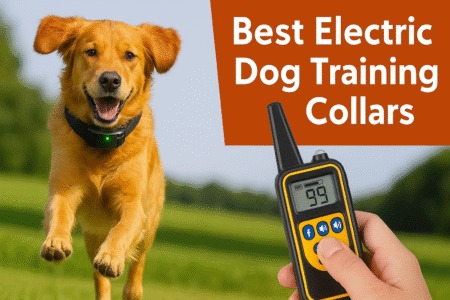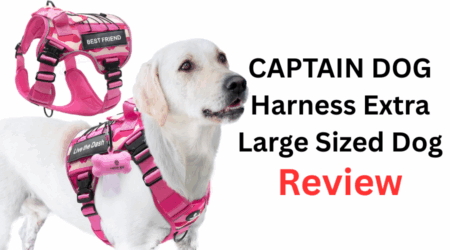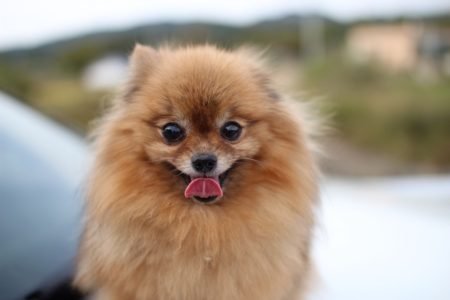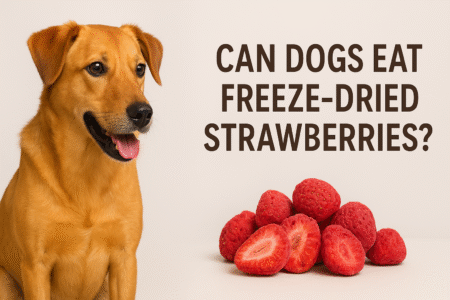- Why Large Dogs Benefit from Harnesses
- The Physical Impact of Collars vs. Harnesses
- Preventing Neck Injuries in Large Breeds
- Enhanced Control for Powerful Dogs
- Understanding Different Types of Dog Harnesses
- Front-Clip Harnesses
- Back-Clip Harnesses
- Dual-Clip Harnesses
- No-Pull Harnesses
- Tactical and Working Dog Harnesses
- When Should You Use a Harness for Your Large Dog?
- Daily Walks and Exercise
- Training Sessions
- Special Activities and Adventures
- Medical Considerations and Rehabilitation
- Measuring Your Large Dog for the Perfect Harness Fit
- Essential Measurements to Take
- Chest Girth Measurement
- Neck Measurement
- Length Measurement
- Common Sizing Mistakes to Avoid
- Breed-Specific Sizing Considerations
- Tips on Choosing the Right Harness for Large Dog Breed
- Matching Harness Style to Your Dog’s Needs
- Considering Your Dog’s Behavior and Walking Style
- Accounting for Breed-Specific Body Types
- Weight Distribution and Support Features
- Key Materials and Durability Factors for Large Dog Harnesses
- Nylon vs. Leather vs. Mesh Options
- Reinforced Stitching and Hardware
- Weather and Activity Considerations
- Evaluating Buckles and Attachment Points
- Comfort Features to Look for in Large Dog Harnesses
- Padding and Pressure Distribution
- Chafing Prevention
- Adjustability Points
- Breathability and Heat Management
- Safety Elements Every Large Dog Harness Should Have
- Reflective Materials and Visibility
- Secure Closures and Backup Systems
- Handle Placement for Emergency Control
- ID Tag Attachments and Information Storage
- How to Properly Put On and Adjust a Harness for Your Large Dog
- Step-by-Step Fitting Process
- The Two-Finger Rule for Proper Fit
- Signs Your Dog’s Harness Doesn’t Fit Correctly
- Maintaining and Cleaning Your Large Dog’s Harness
- Regular Cleaning Methods for Different Materials
- Inspecting for Wear and Damage
- When to Replace Your Dog’s Harness
- Addressing Common Harness Issues for Large Breeds
- Dealing with Harness Resistance
- Solving Rubbing and Irritation Problems
- Managing Harness Wear and Tear
- Transitioning from Collar to Harness
- Top Recommended Harnesses for Popular Large Dog Breeds
- Best Options for German Shepherds and Similar Builds
- Ideal Harnesses for Broad-Chested Breeds
- Solutions for Deep-Chested Large Dogs
- Specialized Harnesses for Senior Large Dogs
- Conclusion:
Did you know nearly 45% of dog owners say their pets pull on the leash? For big dogs, this can be tough and even dangerous. A large dog harness helps by spreading the force across the chest and shoulders, not just the neck.
A dog harness guide can help you pick the right one for your pet. Harnesses give better control and are easier on your dog’s neck than collars. Choosing the right harness makes walks safer and more fun for both you and your dog.
Why Large Dogs Benefit from Harnesses
For owners of large breeds, using a harness instead of a collar is a big plus. A large dog harness spreads the leash force across the chest and shoulders. This is better than a collar that puts all the force on the neck.
The Physical Impact of Collars vs. Harnesses
Collars can hurt a dog’s neck, leading to discomfort or injury. This is a big problem for powerful breeds that pull hard on the leash. But, a harness makes walking more comfortable by reducing this pressure.
Preventing Neck Injuries in Large Breeds
Neck injuries are a big worry for large dogs, mainly those that pull a lot. A best harness for big dogs is made to stop these injuries. It spreads the force over a wider area of the dog’s body.
Enhanced Control for Powerful Dogs
A good large dog harness also helps owners control powerful dogs better. It fits securely and comfortably. This makes it easier to guide them during walks and training.
When choosing a harness for large breeds, think about durability, comfort, and how easy it is to adjust. This ensures a great experience for both you and your dog.
Understanding Different Types of Dog Harnesses
Choosing the right harness for your large dog is key. There are many types out there, each for different needs and behaviors. Finding the perfect one can be tough.
There are front-clip, back-clip, dual-clip, no-pull, and tactical harnesses. Each has its own benefits, great for large breeds.
Front-Clip Harnesses
Front-clip harnesses have a clip at the front. They help stop pulling by steering your dog back to you. They’re great for training and good for large dogs that pull a lot.
Back-Clip Harnesses
Back-clip harnesses have a clip at the back. They’re comfy for dogs that don’t pull much. They’re good for well-behaved large dogs that don’t need much control.
Dual-Clip Harnesses
Dual-clip harnesses have both front and back clips. They offer flexibility and control. They’re ideal for large dogs needing both comfort and training.
No-Pull Harnesses
No-pull dog harnesses are made to stop pulling. They often have front clips and extra features to prevent pulling.
Tactical and Working Dog Harnesses
Tactical and working dog harnesses are tough and functional. They’re for active large dogs. They have handle grips and spots for accessories.
Knowing about different harnesses helps you choose the right one for your large dog. It ensures they’re comfortable, controlled, and safe during walks and play.
When Should You Use a Harness for Your Large Dog?
A harness is key for large dog owners. It’s safer and more comfy than collars. Knowing when to use a harness is important.
Daily Walks and Exercise
A harness is great for walks and exercise. It spreads the force across the chest and shoulders. This helps large dogs that pull on the leash.
Training Sessions
During training, a harness is very helpful. It lets you control your dog better. Front-clip harnesses are good because they stop pulling.
Special Activities and Adventures
For hikes or dog sports, a harness is essential. It supports and comforts your dog. For active dogs, try a no-pull harness or a tactical harness.
Medical Considerations and Rehabilitation
For medical issues or after surgery, a harness is vital. It supports your dog’s movements or helps them recover comfortably.
Knowing when to use a harness makes your dog safer and more comfortable. It’s all about choosing the right one for your dog.
Measuring Your Large Dog for the Perfect Harness Fit
Getting the right size harness for your large dog is key. A good fit keeps your dog comfy and healthy.
Essential Measurements to Take
You’ll need to measure three things: chest girth, neck, and length.
Chest Girth Measurement
Use a flexible tape to measure around your dog’s chest. It should be snug but not too tight.
Neck Measurement
Measure around your dog’s neck, where a collar would sit.
Length Measurement
Measure from the neck to the tail base.
| Measurement | Description | Importance |
| Chest Girth | Around widest part of the chest | Ensures comfort and proper fit |
| Neck Circumference | Around the base of the neck | Prevents chafing and irritation |
| Length | Base of neck to base of tail | Affects harness stability & comfort |
Common Sizing Mistakes to Avoid
Don’t guess your dog’s size. Always measure them directly. Also, make sure to adjust the harness after buying.
Breed-Specific Sizing Considerations
Different breeds need different harness sizes. For example, Bulldogs need wider harnesses. Greyhounds need ones that fit their deep chests.
Tips on Choosing the Right Harness for Large Dog Breed
Choosing the right harness for your large dog is important. It ensures their comfort and safety. A good harness can make walks better, reducing injury risks and improving control.
Matching Harness Style to Your Dog’s Needs
The harness style should match your dog’s needs. For example, a front-clip harness is great for dogs that pull. It steers them back to you when they pull on the leash.
Considering Your Dog’s Behavior and Walking Style
It’s key to know your dog’s behavior and walking style. If they pull a lot, a harness with a no-pull feature is helpful. For well-behaved dogs, a simpler harness is enough.
Accounting for Breed-Specific Body Types
Different breeds need different harnesses. Bulldogs need a harness that fits their broad chest. Greyhounds need a snug harness without being too tight.
Weight Distribution and Support Features
A good harness spreads your dog’s weight evenly. Look for ones with padding and adjustable straps for a comfy fit. Some harnesses also have handlebars for easier control.
| Harness Feature | Benefit | Recommended For |
| Front-Clip Design | Discourages pulling, improves walking control | Dogs that pull on the leash |
| Padded Sections | Enhances comfort, reduces chafing | All dogs, specially those with sensitive skin |
| Adjustable Straps | Ensures a secure, customizable fit | Dogs of various sizes and breeds |
| No-Pull Feature | Reduces pulling behavior | Dogs that pull strongly on the leash |
By thinking about these factors and features, you can pick a harness that meets your dog’s needs. It will also make walks better for them.
Key Materials and Durability Factors for Large Dog Harnesses
Choosing the right harness for your large dog is key. It must be durable and comfortable. A good harness keeps your dog safe during walks and play.
Nylon vs. Leather vs. Mesh Options
Material choice depends on your dog’s size, activity level, and your preferences. Nylon harnesses are tough and easy to clean, great for active dogs. Leather harnesses have a classic look and last long with care. Mesh harnesses keep dogs cool, perfect for hot weather.

Reinforced Stitching and Hardware
A durable harness needs reinforced stitching to handle dog pulling. The hardware, like buckles and D-rings, must be strong and corrosion-resistant.
Weather and Activity Considerations
Think about the weather and activities with your dog. A water-loving dog needs a quick-drying harness. A cold-weather dog might need a warm harness with reflective materials.
Evaluating Buckles and Attachment Points
The harness’s buckles and attachment points are vital. They must be secure and easy to use. This ensures your dog’s safety and your control.
Comfort Features to Look for in Large Dog Harnesses
When picking a harness for your big dog, think about comfort. A good harness makes walks and playtime more enjoyable for your dog.
Padding and Pressure Distribution
A good harness has enough padding to avoid rubbing and discomfort. Look for ones with padded chest plates and adjustable straps. These help spread out the pressure so your dog stays comfy.
Chafing Prevention
Choose harnesses made from soft, breathable materials to avoid skin irritation. The harness should fit well but not too tight. This way, it moves with your dog without causing discomfort.
Adjustability Points
Having adjustability points is key for a perfect fit. It lets you customize the harness to your dog’s body, ensuring comfort and support.
Breathability and Heat Management
For active dogs or those in warm places, breathability is essential. Harnesses with mesh materials or ventilation systems keep your dog cool and comfy.
By focusing on these comfort features, you can find a harness that fits well and makes walks better for your dog.
Safety Elements Every Large Dog Harness Should Have
The right harness can make your large dog safer and more comfortable. When picking a harness, look for certain safety features.
Reflective Materials and Visibility
Reflective materials are a key safety feature. They make your dog more visible at night or in dim light. Harnesses with reflective strips or threads are best. This can help avoid accidents by making your dog easier to see.
Secure Closures and Backup Systems
A good harness should keep your dog from getting loose. Choose harnesses with strong buckles and consider those with extra safety features. This way, even if one part fails, the harness stays on.
Handle Placement for Emergency Control
A handle on the harness gives you extra control in emergencies. It’s useful in sudden situations or crowded places. The handle should be strong and easy to reach for quick action.
ID Tag Attachments and Information Storage
It’s important to have a secure spot for your dog’s ID tags. Some harnesses also have space for small items like a phone number or medical info. This is very helpful if your dog gets lost.
| Safety Feature | Description | Benefit |
| Reflective Materials | Increased visibility through reflective strips or threads | Enhanced safety during low-light conditions |
| Secure Closures | Robust buckles and backup systems | Prevents escape and ensures harness remains in place |
| Handle Placement | Sturdy handle for emergency control | Provides extra control in unexpected situations |
| ID Tag Attachments | Secure place for ID tags and possible storage for information | Ensures identification and vital information is readily available |
By focusing on these safety elements, you can make your large dog safer and feel more at ease during activities.
How to Properly Put On and Adjust a Harness for Your Large Dog
Fitting a harness right is key for your large dog’s comfort and safety. A good fit spreads the leash force across the chest and shoulders. This helps avoid neck injuries. To get it right, follow these steps carefully.
Step-by-Step Fitting Process
Initial Placement
Start by placing the harness on the ground or holding it open. Guide your dog’s head through the right opening and their legs through the leg holes. Place the harness like a vest.
Securing Straps and Buckles
Once your dog is in the harness, secure the straps and buckles. Begin with the belly strap or the buckle between the front legs. It should be snug but not too tight. Then, adjust the back and neck straps. The harness should be snug but allow two fingers between it and your dog’s body.
Final Adjustments
After securing the harness, check it’s not twisted and not digging into your dog’s skin. Make any needed adjustments for a comfortable fit. It’s essential to check the fit regularly, as your dog’s size and shape can change over time.

The Two-Finger Rule for Proper Fit
A good rule is to fit two fingers between the harness and your dog’s body. This applies to the neck and chest areas. If it’s too tight, it’s uncomfortable. If it’s too loose, your dog might slip out.
Signs Your Dog’s Harness Doesn’t Fit Correctly
If the harness is too tight, you might see rubbing, chafing, or your dog trying to remove it. If it’s too loose, your dog might slip out, or the harness could get caught. Regularly inspect the harness and your dog’s skin to catch any issues early.
By following these guidelines, you can ensure your large dog’s harness is comfortable and safe. This makes walks together more enjoyable.
Maintaining and Cleaning Your Large Dog’s Harness
Keeping your large dog’s harness clean is more than just hygiene. It’s about their safety and comfort too. A well-maintained harness makes sure your dog stays comfy during walks and playtime.
Regular Cleaning Methods for Different Materials
Each material needs a special cleaning method. Nylon or polyester harnesses can be cleaned with mild soap and water. Leather harnesses need a leather cleaner to keep them in top shape. Mesh harnesses can be brushed gently to remove dirt.
Inspecting for Wear and Damage
Check your dog’s harness often for wear and tear. Look for frayed straps or broken buckles. Early detection of damage can help avoid accidents.
When to Replace Your Dog’s Harness
If you see a lot of wear or damage, it’s time for a new harness. A worn-out harness can be unsafe and uncomfortable for your dog.
Addressing Common Harness Issues for Large Breeds
Choosing the right harness for big dogs is more than picking a style. It’s about understanding and solving common problems. Owners of large dogs often face issues with harnesses. Knowing these problems can help find good solutions.
Dealing with Harness Resistance
Some dogs don’t like wearing harnesses, preferring collars. Start by introducing the harness slowly. Let your dog get used to it at their own pace. Positive reinforcement with treats and praise can help make it a good experience.
Solving Rubbing and Irritation Problems
Rubbing and irritation can happen if the harness doesn’t fit right. Make sure it fits well and check for chafing. Harnesses with padded straps can also reduce irritation.
Managing Harness Wear and Tear
Check your dog’s harness often for wear, like frayed straps or broken buckles. Fixing these problems early can prevent bigger issues. Harnesses made from durable materials last longer.
Transitioning from Collar to Harness
Switching from a collar to a harness can take time. Begin by letting your dog wear the harness for short times. Gradually increase the time. This helps your dog get used to the new harness.
Top Recommended Harnesses for Popular Large Dog Breeds
Finding the right harness for your large dog depends on several things. These include breed, build, and age. Each breed has its own needs for a harness.
Best Options for German Shepherds and Similar Builds
German Shepherds and similar dogs need a harness that’s tough and can adjust. Look for ones with reinforced stitching and padded chest plates for comfort.
Ideal Harnesses for Broad-Chested Breeds
Bulldogs and some Mastiff types have wide chests. They need harnesses that fit their chest without being too tight. Harnesses with extra-wide straps and adjustable girth are best.
Solutions for Deep-Chested Large Dogs
Deep-chested dogs, like Greyhounds, need harnesses that fit snugly. Step-in harnesses or those with adjustable depth are good choices.
Specialized Harnesses for Senior Large Dogs
Senior large dogs need harnesses with extra support. Look for ones with additional padding and gentle, easy-to-use fasteners. These can help with joint pain and provide stability.
| Breed Type | Recommended Harness Feature | Example Harness |
| German Shepherd | Durable, Adjustable | Julius K9 IDC Powerharness |
| Broad-Chested Breeds | Extra-Wide Straps | Puppia Soft Harness |
| Deep-Chested Dogs | Step-in, Adjustable Depth | Greyhound Rescue Harness |
| Senior Large Dogs | Extra Padding, Easy Fasteners | ComfortFlex Harness |
Choosing the right harness for your dog depends on their breed and needs. Always measure your dog and check the manufacturer’s guide.
Conclusion:
Choosing the right harness for your big dog is key for their comfort and safety. This guide has shown how important the type of harness, material, and fit are. They all help find the best harness for your dog.
Think about your dog’s needs when picking a harness. Consider their breed, size, and behavior. This ensures a safe and comfy walk for both you and your dog.
By using the tips from this article, you can pick a great harness for your large dog. This will make walks more comfortable and safer, avoiding injuries.
Getting a good harness is an investment in your dog’s health. With the right advice, you can find the perfect harness for your big dog.















Leave a Reply